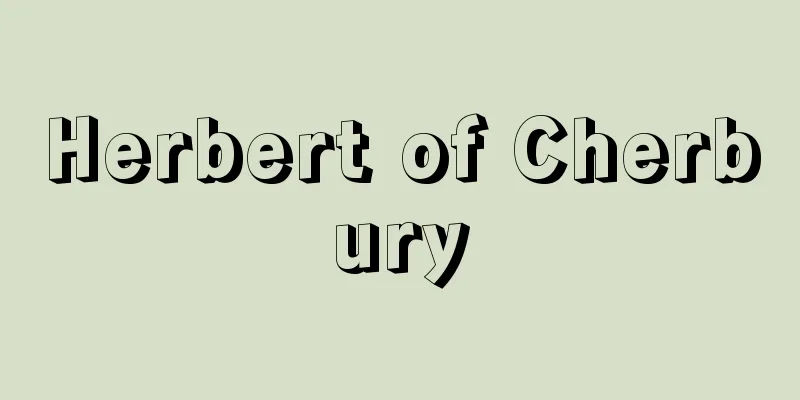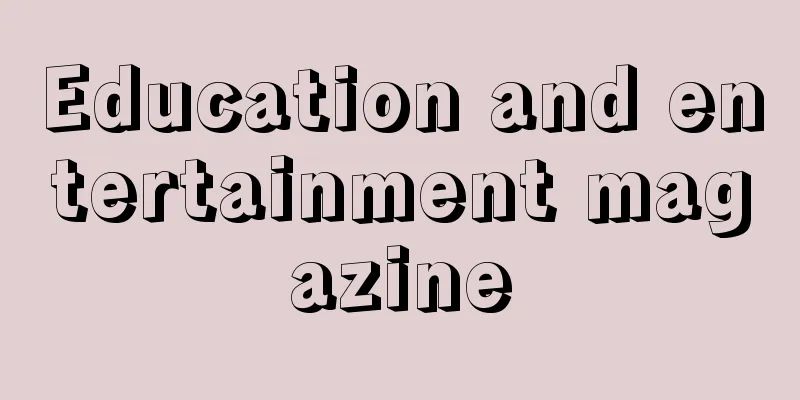Stimulus (English/French), Reiz (German)

|
In a narrow sense, it refers to the physical or chemical energy that acts on the sensory receptors of living organisms, but in a broader sense, it refers to the factors and conditions that determine reactions and behaviors in living organisms. It is sometimes used almost synonymously with information, but the meaning of information is broad and it can be difficult to define. In sensory and perceptual research, stimuli are often used in a relatively narrow sense, but in psychology, from the standpoint of systematically verifying the process through the relationship between stimuli and responses, it is necessary to set and describe appropriate stimuli according to the purpose of each experiment or research. [Stimulus intensity and threshold] In order to produce normal sensations, appropriate sensory stimuli must be input to the receptors. For example, certain stimuli that the receptors should receive, such as light to the eyes and sound to the ears, are called adequate stimuli. On the other hand, pressure stimuli and ultraviolet light to the eyes are inadequate stimuli. However, just as we can sense light by holding the eyeball with our hand over the eyelid, inadequate stimuli can also produce sensations. On the other hand, even if an appropriate stimulus is present, if the stimulus intensity is weak, no sensation will be produced. The boundary point between whether a sensation is produced or not, in other words, the minimum stimulus intensity required to produce a reaction, is called the stimulus threshold. A stimulus weaker than the stimulus threshold is called a subliminal stimulus, and a stimulus stronger than the stimulus threshold is called a supraliminal stimulus. The stimulus threshold is also called the absolute threshold to distinguish it from the difference threshold, which is the smallest difference between stimuli that can be sensorily discriminated, or the just noticeable difference (also abbreviated as jnd). Incidentally, the minimum presentation time or stimulus intensity at which a concrete object such as a letter or word can be perceived is called the recognition threshold. If the stimulus is too strong, the sensation will not change or will become painful. The upper limit of the stimulation that can be felt for an appropriate stimulus is called the terminal threshold or terminal stimulus. The terminal threshold is generally very strong, so it is difficult to measure. [Constancy and Stimulus Equivalence] Stimuli received by the sensory organs differ from their physical characteristics in the outside world. For example, in the input of the visual system, a three-dimensional object in the outside world is converted into a two-dimensional retinal image. E. Brunswik distinguished between objects in the outside world as distal stimuli and their projected images on the retina as proximal stimuli (retinal image). Although proximal stimuli change in various ways, we have the function of perceptual constancy, which keeps the characteristics of objects, such as their size and shape, relatively constant, allowing us to interact appropriately with the outside world. Constancy is a perceptual function that combines versatility and efficiency in processing stimuli. A related phenomenon is stimulus equivalence. When discrimination learning is established for a certain stimulus, even if the stimuli are physically different, the observer may not perceive the difference between the stimuli and may produce the same response. In this case, the stimuli are said to be equivalent. Stimulus equivalence experiments examine the extent to which a response conditioned to a certain stimulus generalizes to other stimuli, which corresponds to examining one aspect of stimulus generalization. However, generally, whereas stimulus generalization experiments examine responses to stimuli that are quantitatively different in a specific physical dimension (e.g., sound frequency), stimulus equivalence experiments examine a wider range of stimulus changes. For example, using a circle and a square, after learning that the square is the correct stimulus, the shape and presentation direction of the correct stimulus are changed in various ways to examine whether it is equivalent to the correct stimulus. In addition to changing the form of the stimulus, the colors of the figure and background of the stimulus are inverted, the area is also changed at the same time, etc. Examination of equivalence under such complex change conditions can sometimes go beyond the perception level and reach the thought level of whether or not a concept is valid (judging whether or not multiple attributes are adopted in a certain concept). In terms of the input system of information processing, the issue of equivalence is also related to pattern recognition, which distinguishes the nature of stimuli. For example, pattern recognition problems include voice recognition, which recognizes and interprets human voices from audio data, text conversion, which recognizes and outputs characters from image data, and document search, which recognizes and extracts specific keywords. At first glance, these processes seem commonplace in the human brain, but when trying to realize them using computer technology, difficulties arise in terms of both accuracy and speed. However, in recent years, great results have been achieved not only in the field of natural information processing, but also by integrating them with artificial intelligence and statistical research. [Classical concept of error] It was Fechner, GT, who quantified the functional relationship between the physical quantity of a stimulus and the corresponding sensory quantity, and established the psychophysical measurement method. In other words, the purpose of psychophysics is to pursue the function (perception function) between SS (stimulus-stimulus) through the observation of the SR (stimulus-response) relationship. In response to this, Titchener, EB, from the viewpoint of sensationalism, criticized the confusion between psychology and physics, arguing that the way "experience" is treated is different in psychology. In other words, the experience that psychology deals with is different from the physical dimension, has properties unique to psychology, and occurs according to its laws. He called the tendency to think that the properties of physical stimuli are experienced as they are the stimulus error. In this viewpoint, non-intuitive conscious contents that cannot be reduced to psychological elements were also considered to be a kind of stimulus error. Following the term coined by Titchner, Köhler, W. presented the concept of experience error. This refers to the mistaken belief that there is an organization on the side of stimuli that corresponds to the perceptually unified and integrated nature of everyday experience (organization). For example, in the visual system, the idea that the reason why multiple black dots are seen arranged in a circle is because the retinal image is circular, is the mistake of regarding perceptual characteristics that can only be obtained through direct experience as characteristics of the near stimulus (retinal image). → Threshold → Constancy → Psychophysical measurement method [Ikeda Masami] Latest Sources Psychology Encyclopedia Latest Psychology Encyclopedia About Information |
|
狭義には,生体の感覚受容器に作用する物理的ないし化学的エネルギーを指すが,広義には,生体における反応や行動を規定する要因や条件を指す。また,情報informationとほぼ同義に用いられることもあるが,情報の意味する範囲は広く,解釈が定まりにくい場合もある。感覚・知覚研究における刺激は比較的狭義の意味で用いられることが多いが,心理学では,刺激と反応の関係を通して,その過程を系統的に検証する立場から,それぞれの実験や研究目的に応じて適切な刺激の設定と記述が求められる。 【刺激強度と閾】 正常な感覚を生じさせるには,受容器に適切な感覚刺激sensory stimulusが入力されなくてはならない。たとえば,眼に対する光,耳に対する音など,受容器が本来受け取るべき特定の刺激は適刺激(適当刺激)adequate stimulusとよばれる。一方,眼に対する圧刺激や紫外線などは不適刺激(不適当刺激)inadequate stimulusとなる。ただし,瞼の上から手で眼球を押さえるなどしても光を感じることがあるように,不適刺激でも感覚が起こる場合がある。 一方,適刺激があっても,その刺激強度が弱いと感覚は生じない。感覚が生じるか生じないかの境界点,すなわち反応を起こすのに必要な最小の刺激強度を刺激閾stimulus thresholdとよぶ。また,刺激閾よりも弱い刺激を閾下刺激subliminal stimulus,刺激閾よりも強い刺激を閾上刺激supraliminal stimulusとよぶ。刺激閾は,刺激間の差異を感覚的に弁別できる最小の差である弁別閾difference threshold,または丁度可知差異just noticeable difference(jndとも略記)と区別する意味で,絶対閾absolute thresholdともいう。ちなみに,文字や単語など具体的な対象を知覚できる最小の呈示時間や刺激強度は,認知閾recognition thresholdとよばれる。 刺激は強すぎると,感覚は変化しないか痛みに変わる。適刺激に対して感じられる上限の刺激値を刺激頂terminal threshold,terminal stimulusとよぶ。刺激頂は一般に刺激強度が非常に大きいことから,その測定には困難を伴うとされる。 【恒常性と刺激等価】 感覚器で受容された刺激は,その外界における物理的特性とは異なっている。たとえば視覚系の入力において,外界の3次元の対象は2次元の網膜像に変換される。ブルンスウィックBrunswik,E.は,外界における対象を遠刺激distal stimulus,網膜における投影像を近刺激proximal stimulus(網膜像)として両者を区別した。近刺激はさまざまに変化するが,われわれは対象の大きさや形などの特徴を比較的一定に保つ知覚の恒常性perceptual constancyの機能をもっており,それにより外界と適切に相互作用している。 恒常性は刺激の処理において,融通性と効率性を兼ね備えた知覚機能であるといえる。この現象に関連するものとして,刺激等価性stimulus equivalenceとよばれるものがある。ある刺激に対して弁別学習が成立したとき,物理的には異なる刺激であっても,観察者にとっては,それらの刺激の相違が知覚されずに同一の反応を生じさせることがあり,このとき,それらの刺激を等価であるという。刺激等価性の実験は,ある刺激に条件づけられた反応が,他の刺激に対してどの程度まで般化するかを吟味するという点で,刺激般化stimulus generalization(般化generalization)の一側面を検討することに相当する。ただ一般的には,刺激般化の実験では,特定の物理的次元(たとえば音の周波数)において定量的に異なる刺激に対する反応を吟味するのに対して,刺激等価性の実験では,より広範な刺激の変化を吟味する。たとえば,円と正方形を用いて,正方形を正刺激として学習した後,正刺激の形状と提示方向をさまざまに変化させ,それが正刺激と等価であるか否かを吟味する。さらに刺激の形態だけでなく,刺激の図と地の色を反転させたり,面積も同時に変化させるなどする。このような複合的な変化条件における等価性の吟味は,知覚レベルを超えて,概念が成り立つか否か(ある概念において複数の属性の採否を判断する)という思考レベルの問題にまで至ることもある。 等価性の問題は,情報処理の入力系でいえば,刺激の性質を判別するパターン認識にも関連する。たとえば,音声データから人間の声を認識して解釈する音声認識,画像データの中から文字を認識して出力するテキスト変換,特定のキーワードを認識して抽出する文書検索などが,パターン認識の問題に含まれる。人間の脳では一見当たり前のように思われるこれらの処理をコンピュータ技術で実現しようとする際には,精度と速度どちらの面についても困難を伴う。しかし近年,自然情報処理の分野だけでなく,人工知能や統計研究と融合して大きな成果を上げている。 【錯誤の古典的概念】 刺激の物理量とそれに対する感覚量の関数関係を定量化し,精神物理学的測定法を確立したのはフェヒナーFechner,G.T.であった。すなわち,精神物理学の目的は,S-R(stimulus-response)関係の観測を通して,S-S(stimulus-stimulus)間の関数(知覚関数)を追究することである。これに対し,ティチナーTitchener,E.B.は感覚主義の立場から,心理学と物理学における「経験」の扱い方は異なるとして,これらの混同を批判した。つまり,心理学が扱う経験は物理的次元とは異なり,心理学特有の性質をもち,その法則に従って生じるとした。そして,物理的刺激の性質がそのまま経験されるという考えに陥りやすいことを刺激錯誤stimulus errorとよんだ。またこの立場においては,心理的要素へと還元できない非直感的な意識内容も一種の刺激錯誤であるとみなされた。ティチナーの造語にならって,ケーラーKöhler,W.は,経験錯誤experience errorの概念を提示した。これは,日常の経験として知覚的にまとまって一体を成しているもの(体制化)に対応して,刺激作用の側にも体制化が存在するかのように思い誤ることを指す。たとえば,視覚系において,複数の黒い点が円形に配置されて見えるのは網膜像が円形であるからだとする考えのことで,本来直接経験によってのみ得られる知覚的特性を近刺激(網膜像)の特性とみなす錯誤のことである。 →閾 →恒常現象 →精神物理学的測定法 〔池田 まさみ〕 出典 最新 心理学事典最新 心理学事典について 情報 |
>>: Underground request - Jigeuke
Recommend
Magnesia brick (English spelling)
...Used in the hearth of a blast furnace and in v...
Country Gentleman - Inakashinshi
〘 noun 〙 A country gentleman. A man who pretends t...
Naoie Ukita
Year of death: February 14, 1581 (March 18, 1581) ...
musical comedy
Musical comedy is a type of comedy that is perfor...
Aglaonema pictum (English spelling) Aglaonemapictum
… [Takabayashi Masatoshi]. … *Some of the termino...
Umihebi (sea snake) - Umihebi (English spelling) snake eel
A general term for marine fish belonging to the Op...
Charents, E. (English spelling)CharentsE
...After parts of Armenia were annexed by Russia,...
Mitnaggedim
…Baal Shem Tov (1698-1760), a poor Ukrainian, pre...
Takamikura - Takamikura
The seat on which the Emperor sits during ceremon...
The Outer Title of Relief - Andon no Gedai
...Later, during the Kagen era (beginning of the ...
Parnaíba River (English spelling)
This river is about 1,700 km long and flows along ...
Fujiwara no Kanemichi - Fujiwara no Kanemichi
A politician in the mid-Heian period. Junior Firs...
Squier, GO (English spelling) SquierGO
...The telephone network has been able to grow to...
Botallo, L. (English spelling)
…the artery that connects the pulmonary artery an...
Kisoji Katada - Cleaning Katada
Head of the Katada family of Nagauta musicians. Th...









